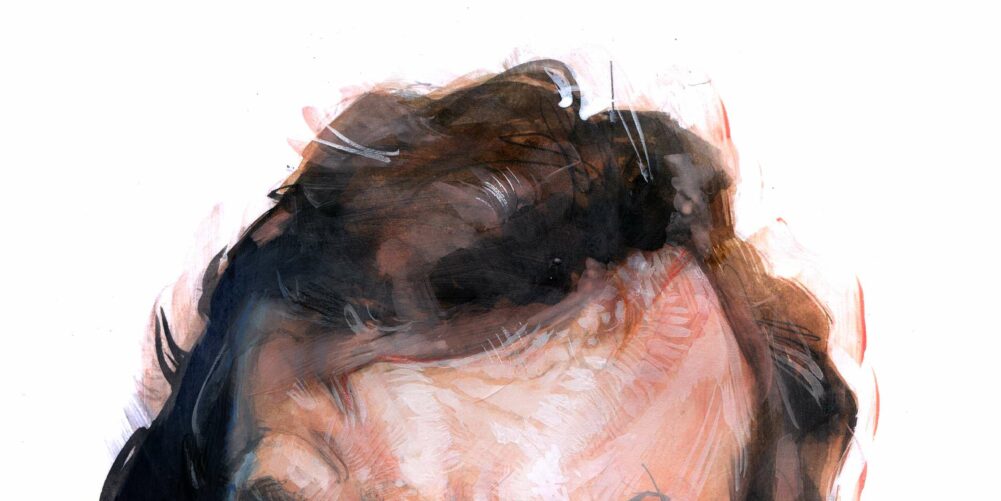There is no finer sight in cricket than a genuinely fast bowler in full cry, mixing up the 100mph inswinging toe-crushers with the kind of bouncer which, when directed to perfection, performs much the same function as one of those nasal hair trimmers you get from Boots.
Do I hear a dissenting voice? Well, yes actually. It’s coming from that quivering wretch 22 yards away, clutching a small piece of wood for self defence, and wondering, in addition to the helmet, the abdominal protector, the arm guard, and the king-sized mattress strapped around his rib cage, whether a pair of incontinence pants might not have been a sensible addition to the wardrobe.
I may be imagining it, but there seem to be far fewer genuinely fast bowlers around now than there used to be.
Pakistan, for example, used to mass produce them, but no-one really frightening has emerged since Shoaib Akhtar. Amir and Wahab cranked it up on occasions this summer, but compared to the Rawalpindi Express, we’re talking more Thomas the Tank Engine.
There was a period, back in the Seventies and Eighties, when county cricket was loaded with mean fast bowlers. These were the days when players were invited to give their close of play drinks orders to the dressing room attendant, except when Hampshire had Andy Roberts in the line-up, or Derbyshire, Michael Holding. In which case it wasn’t so much a case of batsmen being asked: “Do you want a pint or an orange juice?” as,“would you prefer flowers or grapes delivered to the bedside?”
It was amusing, in those days, to observe the tactics employed by the opposing team’s batsmen during the first day warm-up on the outfield. “Morning Mikey. Lovely to see to see you. The missus and kids keeping well?”
Whatever it took to convey to Holding that you were far too nice a chap to pepper with the short stuff.
Another ruse was the promise of handing over your wicket in return for lowering the mph a bit, as happened in a game at Chelmsford circa 1972. Lancashire’s Ken Shuttleworth could be brisk when he wanted, prompting Essex’s Ray East to say to him: “Tell you what Shutty. Just give me a couple of gentle looseners to pat back to you, then I’ll miss a straight one.”
Sure enough, down came a little floaty half volley, which a grinning East flogged through the covers for four. Shuttleworth was not amused, and when he came steaming in for the next ball, East, who knew what was coming, hurled himself to the ground in the bowler’s delivery stride.
Other confrontations weren’t quite so jocular, however. Holding is best remembered for working over Geoffrey Boycott in a sensationally quick over in Barbados, and also for taking 16 England wickets on a flat Oval pitch in 1976, but his most lethal spell of all came at Chesterfield in the mid-Eighties, when Derbyshire were at home to Leicestershire in a Championship game.
Jonathan Agnew was a decent batsman against anything around medium pace and well pitched up, the kind of stuff he grew up with at Uppingham School, but Holding on the bounciest pitch on the circuit in those days was a slightly different matter. Aggers, though, was an accomplished cover driver, and when he received two wide half volleys early on, he despatched them to the boundary with a jubilant flourish.
That was his first mistake. And the second was to flash Holding a broad smile. What followed was for adult audiences only, as Holding now altered to rules of engagement to sending down nothing in his own half, and to alter his aim from the stumps to the batsman. And as Aggers had no intention of remaining anywhere near the stumps, the square leg umpire was in almost as much danger of decapitation as the batsman.
Every county had at least one genuinely fast bowler, and not necessarily international ones. There was a West Indian on Leicestershire’s books by the name of George Ferris who felled Middlesex’s Roland Butcher at Lord’s with a ball so rapid that the batsman still bears a deep depression in his cheekbone.
Like many fast bowlers, George was the one of the gentlest of chaps off the field, as was Holding, and another Derbyshire favourite, Devon Malcolm, so erratic that he was just as capable of cleaning up the fielder at short leg as the batsman.
Given the choice of facing Holding or Malcolm, most batsmen would have chosen Dev, if only on the grounds that if he didn’t know where it was going, what chance had they got? But who, of all of them, was the most frightening?
Jeff Thomson would be right up there, and would doubtless get David Lloyd’s vote. Bumble’s after-dinner speech repertoire rarely fails to include getting hit amidships by Thommo on the 1975 Ashes tour, when the force of the blow squeezed his personal bits and pieces through the airholes in his primitive abdominal protector.
When he finally got his breath back, Bumble declared the physio surplus to his immediate requirements, and asked for someone to get hold of the Yellow Pages and send for a welder.
Of all the fast bowlers Graham Gooch faced, the only time he felt afraid, he said, was facing Patrick Patterson on a bouncy pitch in Jamaica. Viv Richards once made a similar comment about Sylvester Clarke, who once split Gooch’s helmet in half, and ripped one into David Gower’s glove with such venom that they found the thumbpiece halfway to third man.
However, the man who might have been the meanest fast bowler of all time never got a chance to prove it.
It was at an England up-country match in Kalgoorlie in 1986, when the late Wilf Slack opened the batting against the home team’s local tearaway, Norman ‘Stormy’ Gale.
Unlike Holding and Whispering Death, because you couldn’t hear him coming, Norman was ‘Invisible Death’, because you couldn’t see him coming.
His run-up started from behind a hot dog stall in an adjacent field, and when he finally came into view, the voice of the MC boomed through the loudspeakers: “And here comes Stormy Gale! Hoping to put the wind up the Poms!”
Whether or not the marathon run-up had exhausted him, Stormy lost his undercarriage in his delivery strike, and after being retrieved from a crater that might have unearthed another Kalgoorlie diamond mine, he was helped from the field.
He did return later to bat, and got himself clean bowled by someone who perhaps wasn’t the fastest, but who was as feared as any of them.
Let’s face it, the shame involved in getting out to Gower was enough to make any batsman tremble.
This piece originally featured in The Cricket Paper, Friday August 19 2016
Subscribe to the digital edition of The Cricket Paper here












